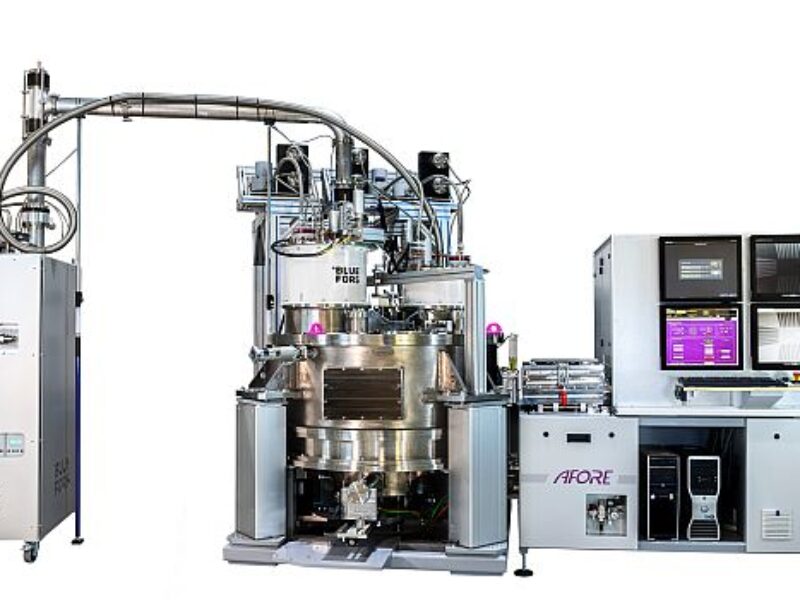
‘Cryprober’ testing accelerates quantum computing development
To be located at Intel’s Oregon campus next to several quantum computing dilution refrigerators, the Cryogenic Wafer Prober is designed to test and validate qubits needed for quantum computing. It allows researchers to test qubits on 300mm wafers down to temperatures of a few kelvins, say the companies, making it a first-of-its-kind testing tool for quantum computing.
“Building on our expertise in transistor process technology, we saw the need to create a 300mm high-volume fabrication and test line for semiconductor spin qubits,” says Dr. Jim Clarke, director of Quantum Hardware, Intel. “We are focused on the manufacturability and scaling issues for quantum, and a fast feedback through the cryoprober allows Intel to accelerate our scientific learning.”
Until now, says the company, the electrical characterization of qubits was very slow compared with traditional transistors, often taking days to collect even small subsets of data. The turn-on characteristics of qubits must be measured at low temperatures of less than a few kelvins above absolute zero.
Each quantum processor is tested for months in a low-temperature dilution refrigerator to determine what works and what doesn’t work. The new tool allows the company to automate and collect information on spin qubits, including sources of quantum noise, the quality of quantum dots, and the materials that matter in building spin qubits in a matter of minutes versus weeks.
“So far the past year, Intel has worked with Bluefors and Afore to combine our expertise and build a fast, electrical characterization tool that can operate in the quantum regime,” says Clarke. “We hope that by designing this tool, the industry can use it to accelerate the progress of quantum computing.”
In a first demonstration of the tool’s usefulness, the company measured the electrical turn-on characteristic for more than 100 qubit structures across a wafer fabricated at its silicon qubit fabrication flow on its 300mm processing line in Oregon. The tool was able to collect high-volume cryogenic data and create a statistical correlation of the increase in turn-on voltage between room temperature and cryogenic temperature.
For more, see Intel’s Quantum Computing webpage.
Related articles:
Intel testing tiny ‘spin qubit’ chip for quantum computing
Intel: Silicon spin qubits hold promise for quantum computing
Compact qubit readout sensor advances silicon quantum computing
IBM unveils commercial quantum computer
 If you enjoyed this article, you will like the following ones: don't miss them by subscribing to :
eeNews on Google News
If you enjoyed this article, you will like the following ones: don't miss them by subscribing to :
eeNews on Google News




